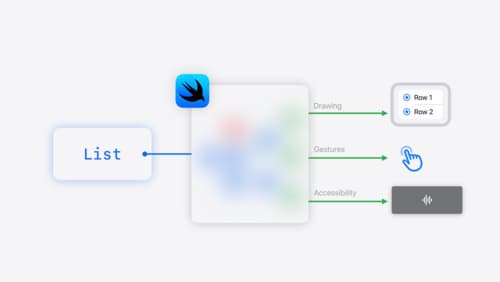table and list view performance
Asked on 2025-04-08
1 search
For improving table and list view performance, Apple introduced several updates at WWDC 2024. In UIKit, collection and table view APIs have been updated to make it easier to update your cells. All views in UI collection view list sections and UITableViews now have the list environment trait set, which helps ensure that cells are styled appropriately in any given list. This update removes the need to know the style of the list when configuring a cell, simplifying the code and potentially improving performance (What’s new in UIKit).
In SwiftUI, lists can be customized through the use of view modifiers, allowing for advanced constructions and performance optimizations. SwiftUI's declarative system automatically keeps your UI up to date when your view state changes, which can help maintain performance (SwiftUI essentials).
These updates aim to simplify code and enhance performance by leveraging new traits and declarative updates.

SwiftUI essentials
Join us on a tour of SwiftUI, Apple’s declarative user interface framework. Learn essential concepts for building apps in SwiftUI, like views, state variables, and layout. Discover the breadth of APIs for building fully featured experiences and crafting unique custom components. Whether you’re brand new to SwiftUI or an experienced developer, you’ll learn how to take advantage of what SwiftUI has to offer when building great apps.

Get started with HealthKit in visionOS
Discover how to use HealthKit to create experiences that take full advantage of the spatial canvas. Learn the capabilities of HealthKit on the platform, find out how to bring an existing iPadOS app to visionOS, and explore the special considerations governing HealthKit during a Guest User session. You’ll also learn ways to use SwiftUI, Swift Charts, and Swift concurrency to craft innovative experiences with HealthKit.

Unlock the power of places with MapKit
Discover powerful new ways to integrate maps into your apps and websites with MapKit and MapKit JS. Learn how to save and reference unique places using Place ID. Check out improvements to search that make it more efficient to find relevant places. Get introduced to the new Place Card API that lets you display rich information about places so customers can explore destinations right in your app. And, we’ll show you quick ways to embed maps in your website with our simplified token provisioning and Web Embed API.
